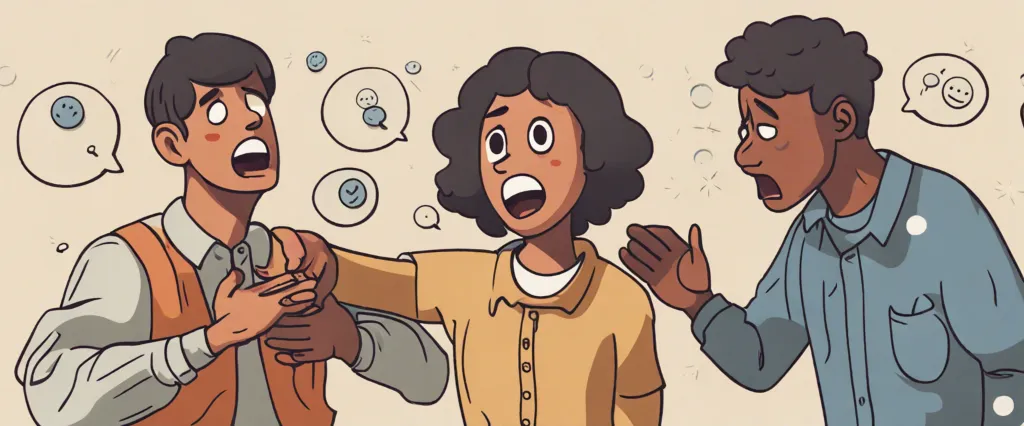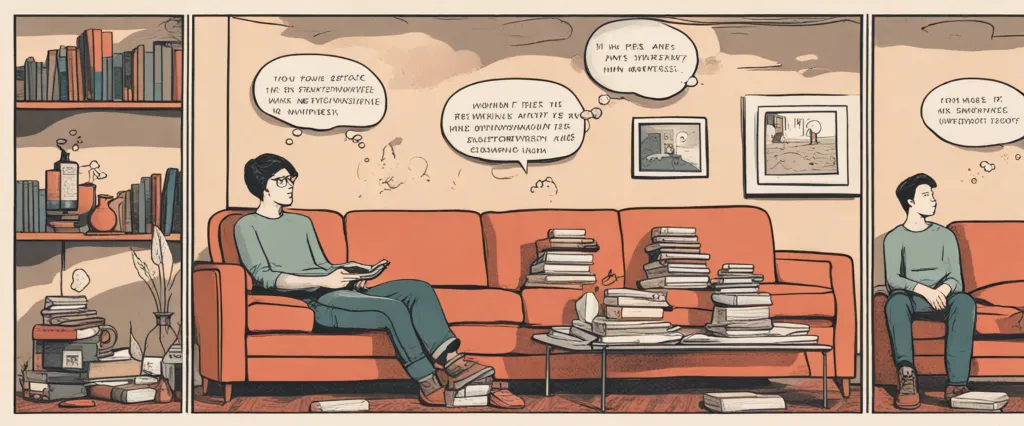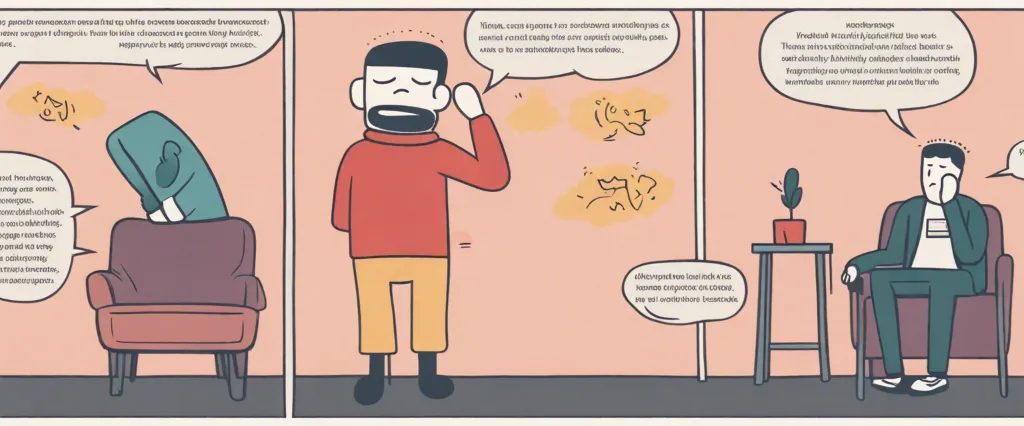
In “Emotional First Aid,” acclaimed psychologist Guy Winch offers a groundbreaking guide to understanding and addressing our emotional wounds. Drawing from his extensive expertise, Winch provides essential tools and strategies to heal psychological injuries, foster emotional resilience, and ultimately lead a healthier and happier life. By exploring the detrimental effects of emotional pain and offering practical techniques for self-care, this book serves as an invaluable resource for anyone seeking to enhance their emotional well-being.
Guy Winch, author of several popular self-help books, is a licensed psychologist and renowned speaker on topics related to emotional health and relationship dynamics. With a Ph.D. in clinical psychology from New York University, Winch combines scientific research with relatable anecdotes and practical advice to support individuals in their journey toward emotional healing. Through his insightful writings, Winch empowers readers to recognize and respond to their emotional needs effectively, leading to a more fulfilling and balanced life.
Chapter 1: The Importance of Emotional First Aid
Chapter 1 of “Emotional First Aid” by Guy Winch emphasizes the significance of effectively addressing emotional pain and psychological wounds. The author contends that society tends to underestimate the impact of emotional injuries on our overall well-being and fails to provide adequate support for healing these wounds. He introduces the concept of emotional first aid, drawing parallels between physical and emotional injuries and highlighting the need for treating emotional pain just as we would physical injuries.
Winch highlights the unfortunate reality that emotional distress is often stigmatized, leading individuals to neglect seeking help or dismissing their pain as trivial. He emphasizes that emotional injuries, such as rejection, loss, failure, and loneliness, can have profound and lasting effects on mental health if not addressed appropriately.
The chapter provides scenarios and real-life examples to illustrate how emotional wounds impact individuals in various aspects of their lives, including relationships, work, and overall happiness. It emphasizes the importance of recognizing and responding to emotional pain promptly, rather than suppressing or ignoring it.
Winch describes the detrimental consequences of letting emotional injuries fester, such as decreased productivity, strained relationships, and increased susceptibility to physical ailments. To counter these outcomes, he advocates for implementing preventive measures and strategies for emotional healing.
In conclusion, Chapter 1 underlines the necessity of giving emotional pain the attention and care it deserves. By incorporating emotional first aid into our lives, we can protect our mental well-being, enhance resilience, and promote healthy emotional healing.
Chapter 2: Healing Rejection and Failure
Chapter 2 of “Emotional First Aid” by Guy Winch is titled “Healing Rejection and Failure.” In this chapter, the author explores the emotions and negative impacts that rejection and failure can have on an individual, and provides strategies for healing and moving forward.
The chapter begins by highlighting the deep pain and psychological wounds that rejection can cause. Whether it is rejection in romantic relationships, job rejections, or being left out socially, the author emphasizes that rejection can significantly damage our self-esteem, trigger feelings of worthlessness, and even lead to depression. Winch stresses the importance of acknowledging these emotions and not trivializing them, as they can have lasting effects if left unaddressed.
The author then delves into the ways we tend to misinterpret rejections, often blaming ourselves and engaging in negative self-talk. He encourages readers to challenge these negative thoughts and reframe rejection as a subjective experience rather than an objective reflection of our worth. By doing so, we can prevent ourselves from spiraling into a cycle of self-doubt and build resilience.
Winch also delves into the healing process for failure, emphasizing that we need to separate the act of failing from our sense of self-worth. He encourages readers to learn from failure rather than dwell on it, highlighting that many successful individuals have faced numerous failures before achieving their goals.
The chapter concludes with practical strategies for healing rejection and failure, such as building self-compassion, seeking support from others, and engaging in activities that boost self-esteem. Winch emphasizes the importance of recognizing our own value and the need to process these emotions to prevent them from affecting our overall well-being.
In summary, Chapter 2 of “Emotional First Aid” focuses on the impact of rejection and failure on our emotional well-being and provides actionable strategies for healing and moving forward. It emphasizes the need to challenge negative thoughts, reframe rejection, and learn from failure, providing a roadmap for emotional healing after experiencing these setbacks.
Chapter 3: Overcoming Loneliness and Social Isolation
Chapter 3: Overcoming Loneliness and Social Isolation of the book Emotional First Aid by Guy Winch explores the detrimental effects of loneliness and social isolation on our emotional well-being and offers practical strategies to overcome these challenges.
The chapter begins by emphasizing the importance of social connection, as humans are inherently social beings who thrive on interpersonal relationships. Loneliness and social isolation, on the other hand, can have severe consequences on our mental health, leading to increased risk of depression, anxiety, and other psychological issues.
Winch explains that loneliness can arise from various sources, including physical isolation, lack of intimate relationships, and feelings of not belonging within a community. He discusses the negative impact of social media and technology on our social connections, warning that virtual interactions often lack the depth and emotional nourishment provided by face-to-face interactions.
To combat loneliness and social isolation, Winch suggests taking proactive steps, such as reaching out to old friends, joining clubs or organizations, or volunteering for a cause that aligns with our values. Engaging in activities that promote social connection, such as team sports or group classes, can also help overcome isolation and foster new relationships.
Importantly, the chapter highlights the importance of self-compassion and reframing negative thoughts about oneself. Developing a positive self-perception and understanding that temporary loneliness does not define our worth can be crucial in overcoming the emotional challenges associated with isolation.
In conclusion, Chapter 3 of Emotional First Aid provides practical guidance on recognizing and addressing loneliness and social isolation. By taking proactive steps to connect with others, engaging in fulfilling activities, and cultivating self-compassion, individuals can overcome these challenges and improve their emotional well-being.
Chapter 4: Dealing with Guilt and Regret

Chapter 4 of “Emotional First Aid” by Guy Winch focuses on the topic of guilt and regret. The chapter explores the effects of these emotions on our mental well-being and offers strategies for dealing with them effectively.
Winch begins by explaining how guilt and regret can be rational or irrational. Rational guilt stems from genuine wrongdoings or mistakes where we have caused harm to others. This guilt can be adaptive and can push us to apologize and make amends. However, irrational guilt and regret arise from situations beyond our control, or from perceived failures that are not our fault. These emotions can be damaging to our mental health if left unaddressed.
The chapter presents various scenarios that commonly trigger guilt and regret, such as relationships, career choices, and parenting. Winch emphasizes the importance of distinguishing between what we could have done differently and what was beyond our control. By challenging our negative self-judgment, we can shift our perspective and alleviate unnecessary guilt and regret.
The author provides practical strategies to help manage these emotions. He suggests reframing our thoughts and practicing self-compassion. By acknowledging that we are human and prone to mistakes, we can learn to forgive ourselves and let go of excessive guilt. Winch emphasizes the significance of taking responsibility for our actions, but also highlights the importance of self-forgiveness and self-care.
Additionally, the chapter emphasizes the role of apology in healing relationships. Winch provides a step-by-step guide on how to apologize effectively, emphasizing the importance of taking responsibility, expressing remorse, and making amends.
In conclusion, Chapter 4 of “Emotional First Aid” explores guilt and regret as common and potentially harmful emotions. It equips readers with practical strategies to manage and overcome these emotions, emphasizing self-forgiveness, self-compassion, and effective apology as key components of the healing process.
Chapter 5: Healing from Loss and Grief
Chapter 5 of “Emotional First Aid” by Guy Winch is titled “Healing from Loss and Grief.” This chapter focuses on understanding the emotional impact of losing someone or something we deeply care about and offers strategies to help navigate the healing process.
The chapter begins by highlighting the misconception that grief is a linear and time-bound process. Winch explains that grief is a highly individual experience and can consume people in different ways, creating a range of complex emotions such as sadness, anger, guilt, and confusion. He emphasizes the importance of allowing oneself to experience these emotions fully and accepting that healing takes time.
Winch offers several practical techniques to aid in healing from grief. First, he emphasizes the significance of acknowledging and memorializing the loss. This can be done through various means like writing a letter or creating a personal memorial. Expressing emotions is crucial as it facilitates the processing of grief.
Another important aspect is maintaining self-care during the healing process. Engaging in activities that bring comfort and solace, such as exercising, practicing mindfulness, or seeking support from loved ones, can help ease the emotional burden.
The chapter also explores how grief can affect one’s everyday life, including work productivity and personal relationships. Winch offers ways to address these challenges, like setting realistic expectations, adjusting routines, and seeking professional help if necessary.
In summary, Chapter 5 of “Emotional First Aid” provides a comprehensive overview of grief and loss. It emphasizes the need for self-compassion, acceptance of emotions, and practical techniques to navigate the healing process. Ultimately, the chapter serves as a guide to help individuals understand their grief, honor their losses, and find ways to move forward and heal.
Chapter 6: Coping with Low Self-Esteem and Insecurity
Chapter 6 of Emotional First Aid by Guy Winch tackles the issue of low self-esteem and insecurity and provides guidance on how to cope with these challenges. The chapter begins by emphasizing the detrimental effects of low self-esteem on our mental health, relationships, and overall well-being.
The author explains how low self-esteem often stems from negative experiences such as criticism, rejection, or failure, which can greatly impact our self-perception. He emphasizes the importance of recognizing and challenging the negative thoughts and beliefs that contribute to low self-esteem.
Winch highlights the tendency for individuals with low self-esteem to engage in self-sabotaging behaviors, such as perfectionism or social isolation, as they fear further rejection or failure. He provides strategies for breaking this vicious cycle by fostering self-compassion and acceptance.
The chapter then explores the concept of core beliefs, deep-rooted assumptions about ourselves and the world that heavily influence our self-esteem. By identifying and challenging these core beliefs, we can gradually shift our perspective and develop a healthier self-image.
Additionally, the author offers practical techniques to counter insecurity, including self-validation exercises, reframing negative thoughts into more positive ones, and seeking support from loved ones or therapy. He emphasizes the importance of practicing self-care and implementing strategies like setting realistic goals, celebrating achievements, and engaging in activities that boost self-esteem.
Overall, the chapter on coping with low self-esteem and insecurity in Emotional First Aid provides valuable insights and actionable strategies for individuals struggling with these issues, empowering them to improve their self-esteem, mental well-being, and overall quality of life.
Chapter 7: Managing Stress and Anxiety
Chapter 7 of “Emotional First Aid” by Guy Winch focuses on managing stress and anxiety. The chapter begins by highlighting the adverse effects of chronic stress, such as increased risk of heart disease, weakened immune system, and mental health issues. Winch explains that stress and anxiety are natural responses, but prolonged or excessive exposure to stressors can be harmful.
The author provides insights into the cognitive biases that fuel anxiety, including catastrophizing and overgeneralizing. He emphasizes the importance of challenging these biases and adopting more rational thinking patterns to alleviate anxiety. Winch suggests techniques such as realistic appraisals, evaluating worst-case scenarios, and focusing on positive outcomes to reframe anxious thoughts.
The chapter also explores the role of mindfulness in stress management. Winch explains that mindfulness cultivates an awareness of the present moment and encourages acceptance, which can reduce anxiety. He offers practical exercises to practice mindfulness, such as deep breathing, body scans, and grounding techniques.
Additionally, the author discusses the impact of self-care on stress management. He encourages readers to prioritize activities that promote relaxation, such as exercise, healthy eating, and sufficient sleep. Winch emphasizes the importance of setting boundaries and managing time effectively to reduce stress levels.
The chapter concludes with a discussion on seeking professional help for chronic stress and anxiety if self-help techniques are not sufficient. Winch highlights the benefits of therapy and medication in managing these conditions, reinforcing the idea that seeking help is a sign of strength.
Overall, Chapter 7 of “Emotional First Aid” provides practical strategies and insights to help individuals manage stress and anxiety. By challenging cognitive biases, practicing mindfulness, and prioritizing self-care, readers can develop healthier coping mechanisms and improve their overall well-being.

Chapter 8: Building Resilience and Emotional Well-being
Chapter 8 of “Emotional First Aid” by Guy Winch, titled “Building Resilience and Emotional Well-being,” delves into the importance of developing resilience and emotional well-being in order to overcome adversity and lead a more fulfilling life.
The chapter begins by highlighting the detrimental effects of negative emotions, such as stress, anxiety, and sadness, on both our mental and physical health. Winch emphasizes the need to address these negative emotions promptly and efficiently, as they can easily escalate and lead to more severe mental health issues.
To build resilience and emotional well-being, Winch suggests several strategies. The first is identifying and challenging negative thinking patterns or cognitive distortions, such as catastrophizing or personalizing, that often contribute to emotional distress. By challenging these distortions, individuals can reframe their thinking in a more constructive and positive manner, leading to increased emotional resilience.
Adopting self-compassion is another crucial aspect of building emotional well-being. Rather than berating ourselves for our mistakes and shortcomings, self-compassion encourages treating ourselves with kindness and understanding. Cultivating self-compassion leads to reduced self-criticism, increased self-esteem, and enhanced emotional resilience.
Another valuable strategy outlined in the chapter is developing emotional intelligence. This involves understanding and effectively managing our emotions, as well as empathizing with others’ emotions. By honing these skills, individuals can navigate challenging situations more skillfully, regulate their emotions more effectively, and build more meaningful relationships.
Finally, building emotional well-being also entails cultivating optimism and focusing on positive emotions and experiences. Engaging in activities that bring joy, practicing gratitude, and nurturing healthy relationships can all contribute to a more positive mindset and greater emotional resilience.
In conclusion, Chapter 8 of “Emotional First Aid” emphasizes the importance of building resilience and emotional well-being to overcome adversity and lead a more fulfilling life. By challenging negative thinking patterns, fostering self-compassion, developing emotional intelligence, and focusing on positive experiences, individuals can strengthen their emotional resilience and create a healthier, more balanced life.
After Reading
In conclusion, Emotional First Aid by Guy Winch offers valuable insights and practical strategies for tending to our emotional wounds. Winch emphasizes that just as we prioritize physical health, we must also prioritize our psychological well-being. By addressing common emotional injuries such as rejection, failure, and loneliness, Winch empowers readers to build resilience, strengthen their emotional immune system, and ultimately lead happier, more fulfilling lives. Through self-care practices, cultivating self-compassion, and seeking professional help when necessary, Winch shows us that emotional healing is not only possible but essential for our overall well-being. This book serves as a powerful reminder that by attending to our emotional health, we can rise above the challenges life presents and thrive.
1. Educated” by Tara Westover: This memoir tells the captivating story of Tara Westover, who grows up in a strict, isolated household in rural Idaho. With no formal education, she eventually escapes and goes on to earn a PhD from Cambridge University. This thought-provoking book explores themes of education, identity, and perseverance.
2. Sapiens: A Brief History of Humankind” by Yuval Noah Harari: In this mind-expanding book, Harari takes readers on a journey through the history of our species. From the evolution of Homo sapiens to the rise of civilizations and the impact of technology, this thought-provoking read challenges traditional narratives about humanity and sheds light on our shared past.
3. The Power of Now: A Guide to Spiritual Enlightenment” by Eckhart Tolle: This transformative book offers readers a guide to finding inner peace and enlightenment in the present moment. Tolle provides practical advice and spiritual insights that help readers break free from past regrets and future anxieties, allowing them to fully embrace the power of now.
4. Born a Crime: Stories from a South African Childhood” by Trevor Noah: Comedian Trevor Noah recounts his upbringing in South Africa during apartheid in this poignant and humorous memoir. Noah’s stories about his unconventional childhood and the challenges he faced as a mixed-race child offer powerful insights into race, identity, and the enduring human spirit.
5. The Alchemist” by Paulo Coelho: A timeless and enchanting tale, “The Alchemist” follows a young Andalusian shepherd named Santiago on his journey to discover his personal legend. This allegorical novel is filled with wisdom and inspiration, reminding readers of the importance of following their dreams and listening to their hearts.



